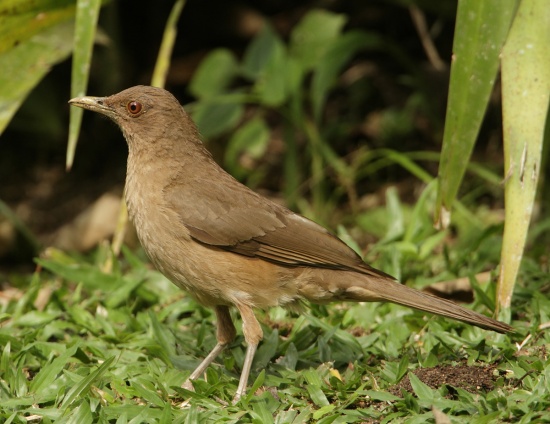(taxonomy, id, ref, behav) |
(behav) |
||
| Line 21: | Line 21: | ||
The diet includes fruit and invertebrates. | The diet includes fruit and invertebrates. | ||
| − | Its nest is a cup made from grass, moss, and mud. | + | Its nest is a cup made from grass, moss, and mud. 1-3 pale blue, red-brown and grey marked eggs are laid with the average above to, but it is only the rare pair that fledges more than two young. It sometimes produces 2 broods. At the local level, singing is highly synchronized, but at the regional level, timing of breeding can vary between one location and the next. |
==References== | ==References== | ||
Revision as of 16:01, 11 July 2010
Alternative name: Clay-colored Thrush
- Turdus grayi
Identification
23–27 cm. Brown, paler underparts, lighter flanks, streaked throat, green yellow bill, pink or flesh legs, red iris. Females a little larger than males.
Distribution
South Texas, Mexico, northern Colombia, and Costa Rica.
Taxonomy
Six subspecies are recognized[1]:
- T.g. tamaulipensis
- T.g. microrhynchus
- T.g. grayi
- T.g. megas
- T.g. casius
- T.g. incomptus
Habitat
Gardens.
Behaviour
The diet includes fruit and invertebrates.
Its nest is a cup made from grass, moss, and mud. 1-3 pale blue, red-brown and grey marked eggs are laid with the average above to, but it is only the rare pair that fledges more than two young. It sometimes produces 2 broods. At the local level, singing is highly synchronized, but at the regional level, timing of breeding can vary between one location and the next.
References
- Clements, JF. 2009. The Clements Checklist of Birds of the World. 6th ed., with updates to December 2009. Ithaca: Cornell Univ. Press. ISBN 978-0801445019.
- Morton & Stutchbury (2001): Behavioral Ecology of Tropical Birds. Academic Press. ISBN 0-12-675556-6
Wikipedia




